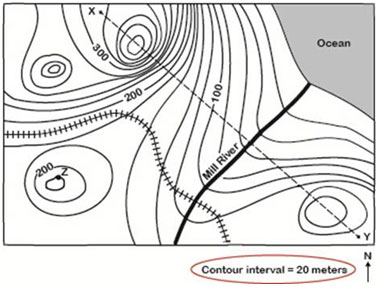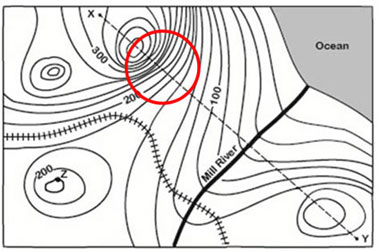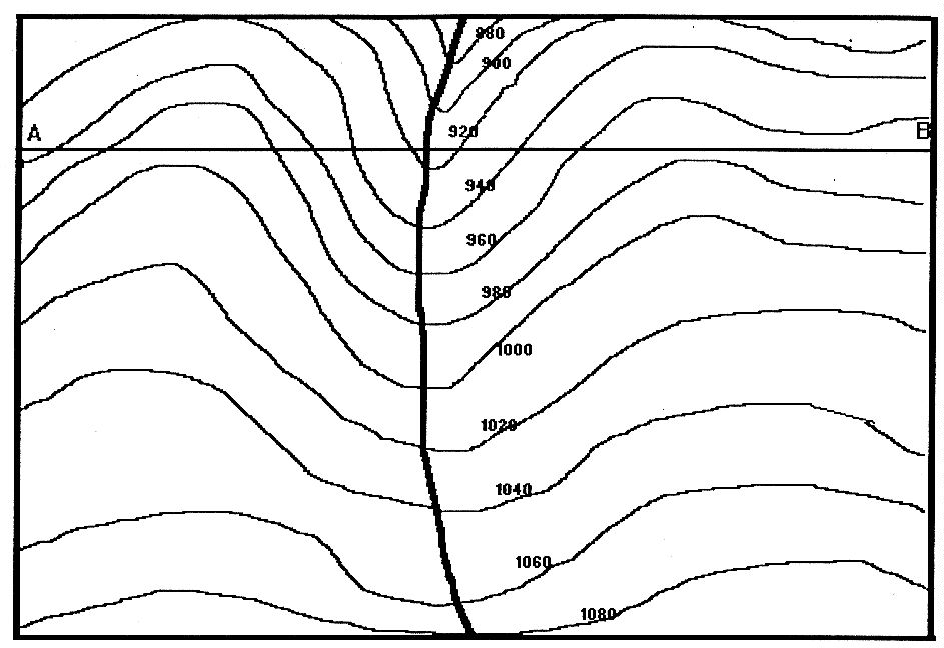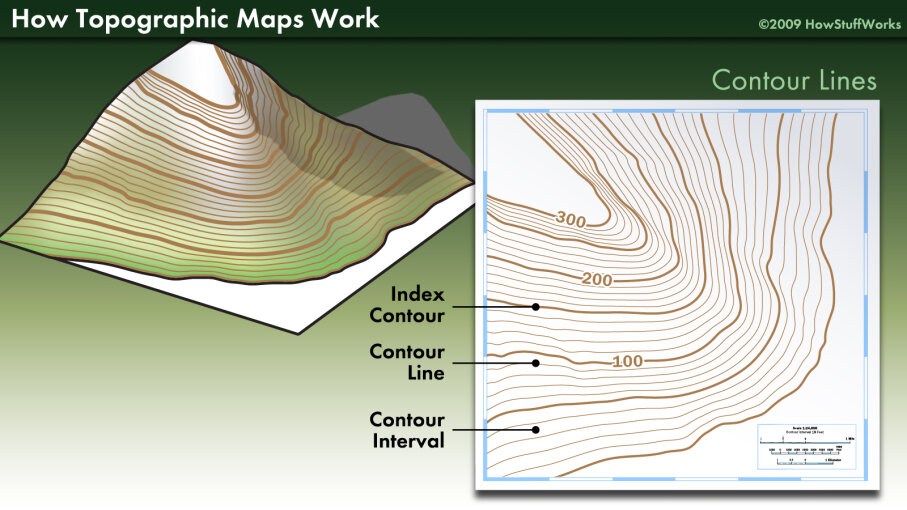How Do Contours On A Topographic Map Relate To Water Flow
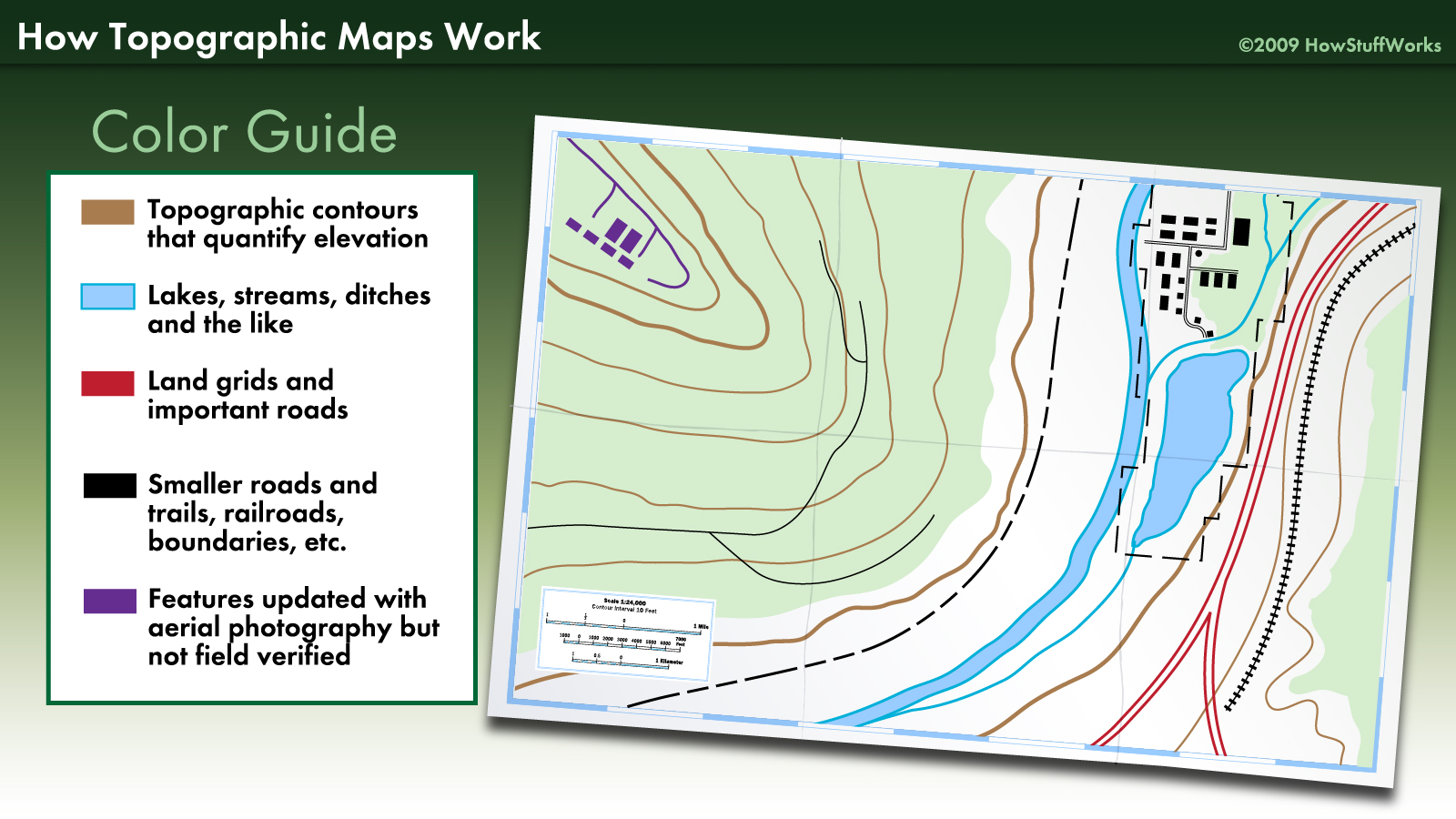
How can you tell the direction of a stream on a topographic map.
How do contours on a topographic map relate to water flow. Point a is on a contour line of 800 ft and point b is on a contour line of 900 ft. Elevation contours are imaginary lines connecting points having the same elevation on the surface of the land above or below a reference surface which is usually mean sea level. How high is this feature. These lines are called contours and should be labelled to show the height that each contour represents.
But the second route has widely spaced spaced contour lines. The first route has closely spaced contour lines. Lots of wells are drilled and hydraulic head is measured in each one. The second way to tell is to look at the pattern of the contour lines.
Water table contours are drawn that join areas of equal head like connect the dots. A general rule of thumb is that water flow is perpendicular to contour lines. First you can look at the elevation of the contour lines that cross the stream. This relationship between contour lines and stream valleys is referred to as the rule of v s.
On a topographic map five contour lines are very close together in one area. The distinctive characteristic of a topographic map is the use of elevation contour lines to show the shape of the earth s surface. All water flows downhill from areas of. The point of the v points up stream.
A contour map shows lines which connect areas equal in height. They essentially represent elevations in the subsurface. These water table contours. What is the rule of v s for contour lines.
How do contours relate to water flow. How do contour lines show the direction of stream flow. Water flows from the top of the saddle or ridge down each side in the same way water flows down each side of a garden wall see arrow on figure e 2. How to read a topographic map and delineate a watershed.
For the slow and steady climber you d pick the second route because widely spaced contour lines mean the slope is gradual but if you picked the first route you re the type of free climber who scales mountains with just a pick axe. This video explains how to determine the direction in which a stream is flowing on a topographic map. How do you determine the direction of water flow. The point of the v points up stream.
Which hiking trail would you take. These elevations are the hydraulic head. On a topographic map a river is shown crossing from point a in the northwest to point b in the southeast. Water flows from the top of the saddle or ridge down each side in the same way water flows down each side of a garden wall see arrow on figure e 2.
In the case of the isolated hill water flows down on all sides of the hill. On a topographic map describe how you can tell a steep slope from a shallow slope. The contour interval is 100 ft. Because a v will always point upstream the orientation of v s can always.
The second way to tell is to look at the pattern of the contour lines. A stream flows downhill this. In the case of the isolated hill water flows down on all sides of the hill. Water will always flow down hill so the elevation of the contour lines will decrease in the direction water is flowing.
Water will always flow down hill so the elevation of the contour lines will decrease in the direction water is flowing. What feature does that indicate. Water table contour lines or flow lines are similar to topographic lines on a map. A general rule of thumb is that water flow is perpendicular to contour lines.







